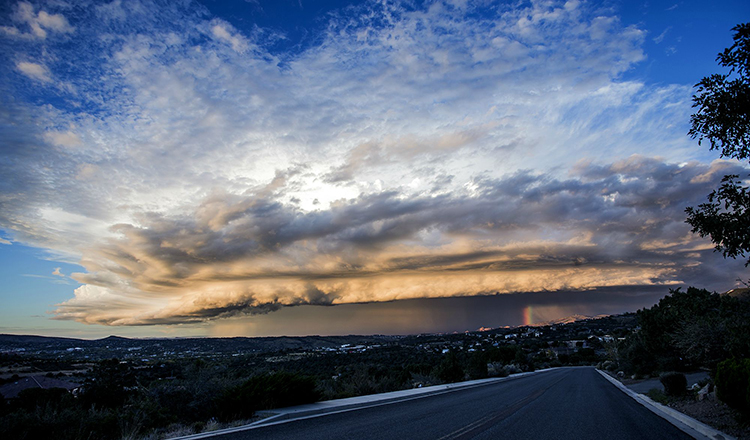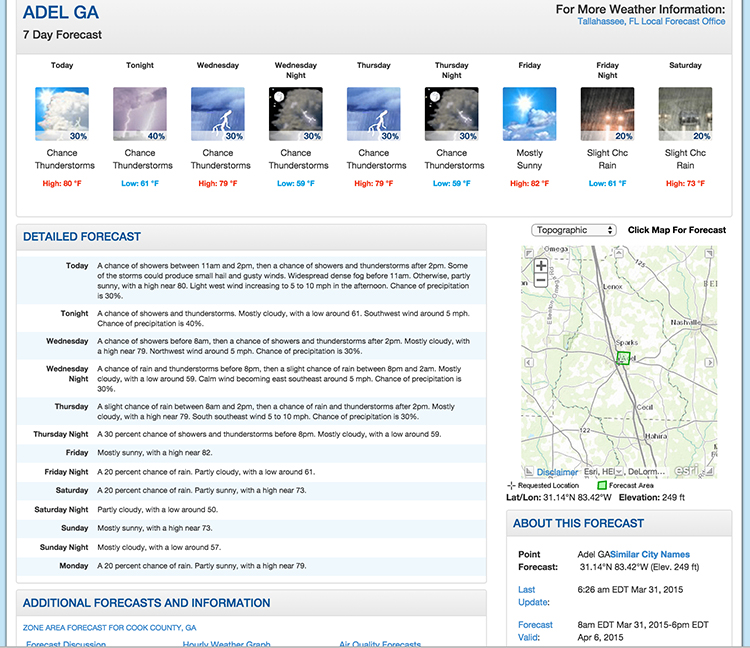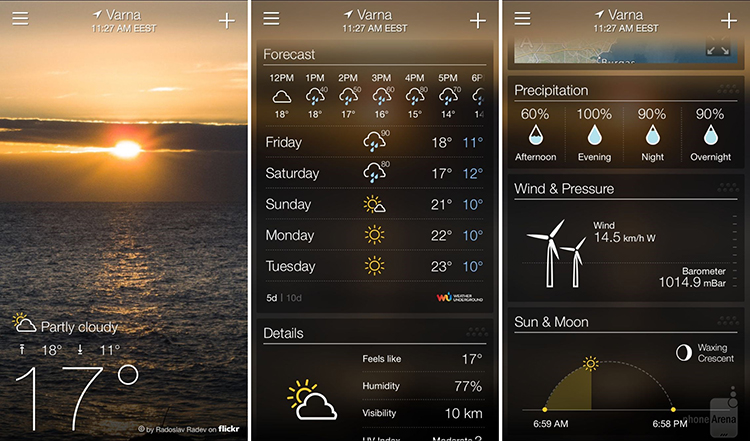Just two weeks ago I wrote about some steps that can help you decide whether to fight a storm or evacuate from one. It’s a good mental start considering your tiny home is probably either built on wheels or on the water or rolling down the highway or made of canvas, etc. But how can you stay prepared in order to be aware of the potential weather forming around you? Are there methods other than the old “trick knee” or a red sky at night?
NOAA WEATHER RADIO
Advance warning is key. If the electricity goes out and you are living on the grid then your connection with the world around you goes out as well. Without that connection you can’t watch television updates, hear news reports, or call a friend from a (admittedly antiquated but still in use) land line. However, a simple way to combat this is to switch to a battery-powered, solar-powered, or hand crank-powered, NOAA radio. This app streams more than 200 NOAA broadcasts and adds in additional information including radar, push notifications, emergency warnings for your state and detailed weather reports. NOAA (National Oceanic and Atmospheric Administration) Weather Radio All Hazards (NWR) is a nationwide network of radio stations broadcasting continuous weather information directly from the nearest National Weather Service office. NWR broadcasts official Weather Service warnings, watches, forecasts and other hazard information 24 hours a day, 7 days a week. In conjunction with Federal, State, and Local Emergency Managers and other public officials, NWR also broadcasts warning and post-event information for all types of hazards – including natural (such as earthquakes or avalanches), environmental (such as chemical releases or oil spills), and public safety (such as AMBER alerts or 911 Telephone outages).
HOME WEATHER STATION
There is no doubt that human beings have a fascination with the weather around them. From morning coffee talk to afternoon debriefings more interactions involved weather talk than perhaps any other one topic. In extension the home weather station has become wildly popular in the last few years to aid in this conversation and with small stations available in stores like Menards, Home Depot, and Sam’s Club, people are becoming more and more prepared for impending storm cells. Simply put a home weather station is a set of weather measuring instruments operated privately, not adhering to any official standards, and measuring at least four or more measured parameters such as rain (in inches), wind speed and direction, barometric pressure, and humidity.
Web-based services like weatherUSA Alerts is a real-time weather alert service that sends out weather warnings, watches, tropical alerts, and other advisories as soon as they are issued by federal agencies including the National Weather Service. Alerts are sent to subscribers in the warned areas to a mobile device via text messages (SMS) or by e-mail. Users can select warnings to receive based on county or state for local weather warnings, and even national advisories such as tropical storm and hurricane advisories.
[NOTE: Since 2012 the Wireless Emergency Alerts (WEA) system enables the National Weather Service to warn Americans with smart phone about menacing weather, even if they are nowhere near a television, radio or storm sirens. The system notifies people of approaching tornadoes, hurricanes, blizzards and other threats by county. Users do not have to sign up for the service or pay for the text message. And people who prefer not to get the warnings can opt out of the system.]
THE WEB
The most popular weather website – Weather.com (which has a robust App for tablets and smart phones as well) – can show detailed and high-level overviews of current weather conditions and subsequent warnings. However, for those that live tiny and have a more mobile or nomadic lifestyle with a huge emphasis on the outdoors that may not be enough. Sites like the National Weather Service though allow you to search for your location (city, state) to see more in-depth maps, detailed local forecasts, and information about weather conditions including upcoming freezing temperatures, wind speeds by hour, rainfall levels, air quality, and even wildfire warnings.
APPS
While there are countless weather apps available for smartphones this category is all about “back to the basics.” Most weather geeks want a little more than just outside temperature and the Yahoo Weather app delivers. Likewise it is tremendous in helping show early warning signs of emergency weather while also delivering warnings and staying updated in the background. Coming either pre-loaded on smart phones or FREE via a swift download, it is safe to say the brilliantly designed Yahoo Weather is clean and clutter-free with no annoying ads. Based on your area (set in preferences) you begin with a full-screen image from said area which illustrates the current weather conditions. Swipe down, and the App reveals the weather forecast for the next few days, as well as more details such as humidity, visibility, and the UV index. Scroll further down to view even more (and more specific) settings such as a cloud map, wind and barometer readings, chances of precipitation, and moon phases. You can even monitor multiple locations by swiping left and right. As of late 2013 the Yahoo Weather app began broadcasting (by default) weather emergencies as well (based on your preference location.)
By Andrew M. Odom for the [Tiny House Blog]




helpful information….thank you. Good on Ya!
blessings,
scott
Red sky at night, sailors delight.
Red sky in the morning, sailors warning.
A NOAA radio is worth its weight in gold, especially in the middle parts of the country where tornadoes and severe thunderstorms are prevalent throughout the year. For very small homes, a storm shelter is worth the effort and investment.
You can get reasonably priced radios now that pull in AM/FM, some shortwave and various emergency bands. It’s best to pick one that can be recharged by as many methods as possible, not just hand crank. It can get awfully tedious turning that handle if you let the battery get low. Some can also charge cell phones. There are a bunch at http://www.etoncorp.com/en/products that will give you an idea of the types and prices out there.